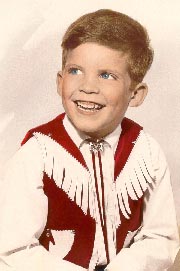I'm having a great time at Shorty's Strickly Bluegrass Festival. A couple friends of Shorty's showed me a trick that will let me keep up with a jam session without – and this is a direct quote – "annoying people" with my newbieness.
That wasn't a comment about my personal skill level; they hadn't heard me play, yet. It was a laying-down-the-law that is part of the background chatter that happens at public jam sessions: the experienced jammers informing their juniors about jam etiquette. (Other pieces of jam etiquette: don't bogart the melody, let everyone who plays your instrument have their share of playing time, let everyone have a turn at choosing the song.)
The trick – which they called "popping" – is this:
- With your bluegrass finger picks, pluck strings 1, 2 and 3, all at once, on the beat.
- Fret the chords by pressing to the neck as usual but, at the same time that you pluck the strings, pull your fretting fingers away from the neck just a little bit.
- The goal is to play the chord, but to have your fretting fingers resting on top of the strings after you pluck. This results in a muffled but accurate tone.
What does this have to do with jam etiquette? It lets the newbie learn the rhythm of the jam without introducing loud, inappropriate notes into the room. (And by "introducing loud, inappropriate notes into the room" I mean "annoying people".)
How, I hear you ask, do you play the chord that the banjo's tuned to? Suppose you're tuned to open G and you want to "pop" a G chord? In that case you start with your fingers resting on the strings (not pressing them to the neck) and pull them off as you pluck. Again: muffle, don't annoy.
I put this trick to the test and was able to play along with and really enjoy one of the the late-night jam sessions that followed last night's performance.
Here's a short video of the jam session that I took when they switched to the key of E, leaving me behind despite my new trick.
The instruments, panning from left to right: fiddle, banjo, string bass, Dobro, Dobro, guitar and string bass.


1 comment:
I learned a very similar technique from my uncle a couple of weeks ago - he called it "vamping". Make the F chord but bring it up from the 1st to the 3rd fret - now it's a G. So you can press down lightly with your left hand and mute the chord. Slide up to the 8th fret for a C and 10th fret for a D.
Post a Comment